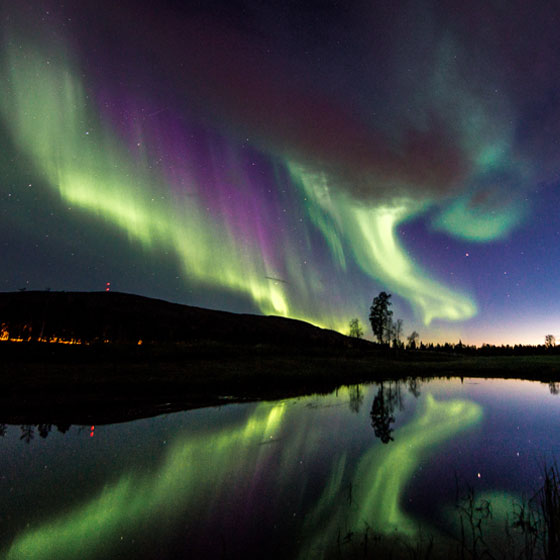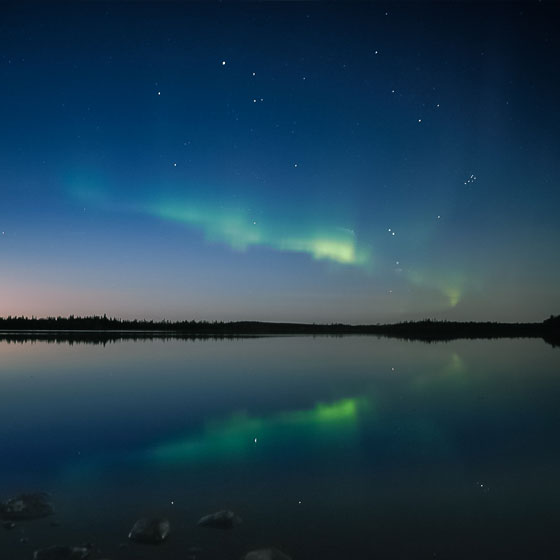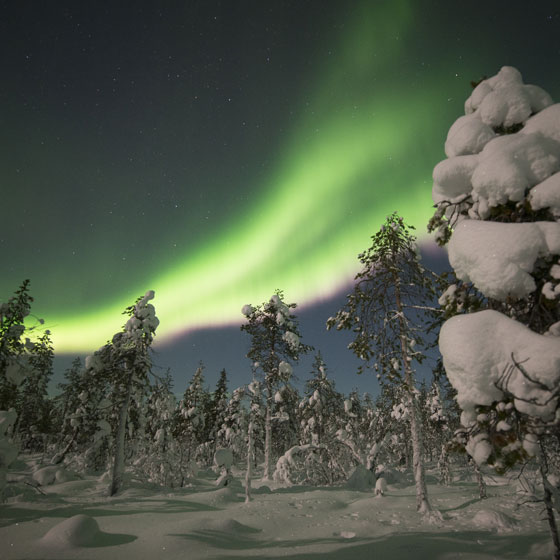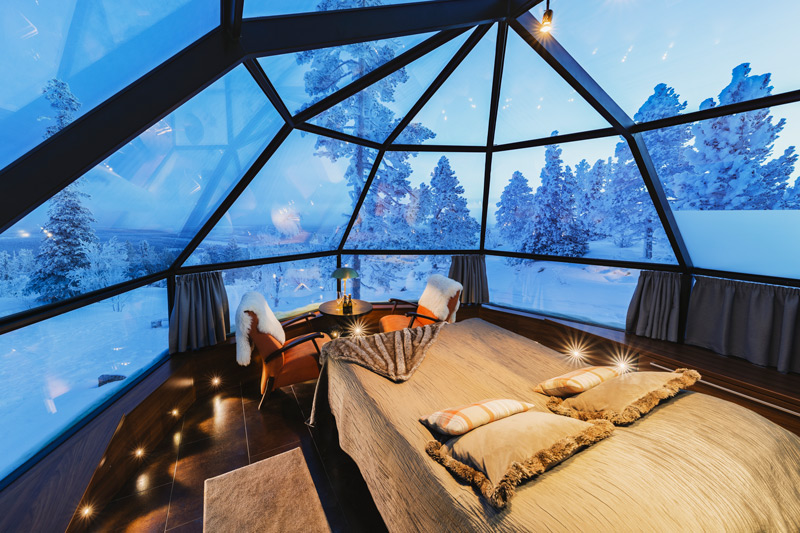It begins as a dim greenish shimmer in the northern horizon and gradually grows into a flame-like waving and colourful light phenomenon that extends across the entire sphere. Even to the locals who have been watching them all their lives find the Northern Lights a miracle they stop to admire.

What are they?
Northern Lights are produced when the solar wind brings charged particles from the sun to the Earth’s atmosphere. In the atmosphere, the particles collide with gas molecules, making them shimmer. The magnetic field around Earth protects the atmosphere from particles coming from space, but the field is weaker at the poles. Therefore, Northern Lights are more common in polar regions than elsewhere in the world.

Why are they colourful?
You can see multiple colours in the Northern Lights. The most common colour is light green, but they can also shine red, yellow, bright green, blue and purple. The colour is determined by the type of gas molecules with which the solar particles collide. The light green colour is produced by oxygen molecules at an altitude of 100–150 kilometres. Rare completely red Northern Lights are produced by oxygen molecules at higher altitudes. Nitrogen provides Northern Lights with the tones of blue and purple.

When can you see them?
Levi is located in an area where northern lights occur often – up to every other night. However, you can only see them when it is dark and the weather is clear. In summer, the sky is too bright and the clouds prevent the Northern Lights from being seen from the ground. The best circumstances for watching the Northern Lights occur on starlit evenings and nights between the beginning of September and April. The Northern Lights are somewhat more common in the autumn and spring than in midwinter, and most commonly they can be seen between ten in the evening and two in the morning.
For additional information about the Northern Lights and their occurrence, please visit the Finnish Meteorological Institute website and the FMI’s Space weather in Finland.



